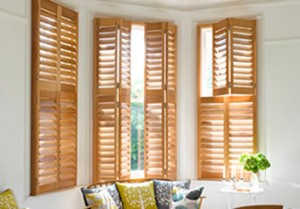 During winter, leaks in windows, doors and other openings let cold air in while letting warm air from your heater out of the house.
During winter, leaks in windows, doors and other openings let cold air in while letting warm air from your heater out of the house.
This causes temperatures inside of your house to drop fast.
Your home’s air conditioning may help you keep warm, but running it nonstop could see you cursing when your utility bill comes in at the end of the month. But don’t worry…there’s a solution.
Awnings and Blinds Can Help Keep Your Home Warm during Winter
Installing awnings and/or blinds can help keep your house cool during winter. It’ll also assist in keeping your bills in check. They work by trapping expensive heat in and keeping the cold air out. This, in turn, makes the insides of your home more comfortable and cozy while helping lower your bills and save on your monthly expenses.
The best thing about installing awnings, blinds or shutters is that these window treatments are much cheaper compared to replacing your windows. With awnings or blinds, you don’t have to hire an expensive home improvement professional to install some insulation. Here’s more on how awnings and blinds help insulate your home during winter.
Awnings And Blinds Both Insulate Your Home In Winter
Studies have shown that awnings, including retractable awnings, conservatory awnings, and folding arm awnings, as well as blinds do a great job of insulating buildings in winter. They have proven to be useful for cutting heat loss in the wintertime.
But it’s worth noting that you still need to draught-proof (put weather sealing) your home to keep them air-tight and reduce any escape of warm air if you want your awnings or blinds to help you realize any significant savings in heating bills. Nonetheless, there’s no denying the benefits of awnings for winter home insulation.
If you have ever stood by a window with no covering whatsoever on a cold day, then you know that cold air tends to seep in through little cracks. Well-installed awnings and blinds can prevent that from happening.
When properly installed, awnings, blinds and shutters will give you one of the simplest and most effective ways to insulate your home this winter. Their only disadvantage is that they may need to stay closed all day in order to work. Make sure they are mounted as close to the glass as possible within the frames of your windows to create a sealed space. This will create a real barrier between you and the frosty outdoor air.
Currently, technology has meant that there are now new, exciting and innovative awnings as well as blinds that are specifically geared toward helping with insulation. These awnings, blinds or screens typically come in a single piece of material that cannot tilt open and close.
The material used in their construction is also designed t
Some shades and awnings feature a dark color on one side (the inside), and this helps absorb heat in the winter. There are also shades with several layers of fiber batting or other fabric material, which creates an air barrier and also acts as insulation.
Many of these awnings and blinds come in many styles including those that can be installed internally (internal awnings), something that makes them extremely effective at providing insulation. To make things even better, they are available in just about every color and many patterns and designs making them extremely versatile.



